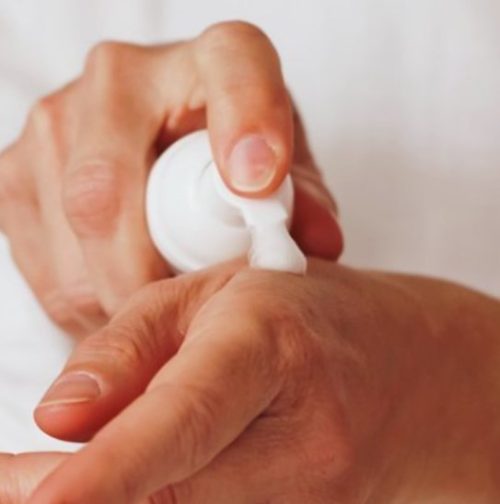Just as ChatGPT answers the question of container-content interaction in cosmetics, we could take the side of talking about the interaction of the cosmetic product and its packaging with the consumer. This would take us into considerations related to the consumer’s experience with the packaging of the cosmetic product. Consideration should be given to measuring how the container, its shape, size, or ease of use would affect the consumer experience.
But in the field of the testing container-content interactions, we will not delve deeper into the territory of marketing and consumer feeling, we will explore how today cosmetic brands can analyze the phenomena of interaction of the formula with its container whether it is bottle, tube, spray, bottle or tube.
Container-content compatibility is generally defined as the guarantee that the qualities of a product (organoleptic, safety and hygiene, etc.) and its intrinsic properties (integrity, state of activities and performance, etc.) are present throughout the use life. This compatibility is an essential step in the development of a new product, and it alone guarantees the safety and performance of the product announced to consumers.
For cosmetic brands, the major role of the packaging system in this compatibility is to protect the formula of the product and to limit the possible phenomena of absorption, adsorption, permeation, permeability or leaching: the container must not contaminate or transfer compounds likely to alter or modify the contents. Thus, compatibility includes the fact that the “container must protect the contents until the end of its shelf life” and “not have an unacceptable impact on the packaged product”, under normal and foreseeable conditions of storage and use. The modifications induced by degradation of the product can be of 4 orders and have consequences on:
- its organoleptic characteristics,
- its chemical composition,
- its microbiological profile,
- its toxicological data.
The European Cosmetics Regulation (1223/2009 of 30 November 2009) lays down a general rule according to which cosmetic products placed on the market must be safe for human health as long as they are used under normal or reasonably foreseeable conditions of use (Article 3). This safety requirement applies to the cosmetic product with its packaging. However, the Regulations are not intended to regulate packaging, which they examine solely through interactions between them.
In order to ensure that no stability problems are induced by the type of container and packaging used, the SCCS (SCCS notes of guidance for the testing of cosmetic ingredients and their safety evaluation11 – 9th revision -September 2015) recommends performing physical stability tests with inert containers and those intended for use on the market. Some manufacturers use pharmaceutical standards (ICH10). In addition, a guide to good stability practices for cosmetic products is being finalized with the ISO bodies (ISO/AWI TR 1881112).
The stability test ensures that the product meets the expected physical, chemical and microbiological standards when stored under normal and reasonably foreseeable conditions. The product is thus exposed to different conditions such as temperature changes, humidity, or UV light. It determines the expiry time of the product (DLU) and the period of use after opening (PAO). This test can be performed using an accelerated aging method (1 to 3 months) or in real time.
The formula of the product, in contact with the container can sometimes undergo physico-chemical alterations of its composition causing a change in its cosmetic properties, the performance of the active ingredients or its integrity. It is necessary in this compatibility analysis to study, step by step, the possible migrations of the components of the packaging in the formula and this under different conditions of humidity and temperature mimicking the normal and real conditions of use and the potential evolutions due to the aging of the product before its expiry date.
After the bibliographic study of possible contaminations, and before any quantification by sophisticated analytical methods, the compatibility of the formula with its container first includes a visual and sensory study (standard NF-ISO-5492) of the organoleptic characteristics of the product, its smell, its texture, its color in particular.
The analyses of the formula carried out at different contact times and under various storage conditions make it possible to measure: the stability of the formula and the quantitative and qualitative integrity of the cosmetic product thanks to advanced analytical technologies such as gas chromatography (GC), gas chromatography coupled to a Mass Spectrometer (GCMS), mass spectrometry, liquid chromatography coupled to a Mass Spectrometer (UPLC MS / MS) …
These analyzes coupled with controlled thermal degradation will make it possible to check if contamination from the packaging to the product takes place and if pollution whether mineral, metallic or plastic damages the formula in the form of traces, impurities or by the presence of prohibited substances (additives, dyes, plasticizers, solvents, antioxidants).
In addition, this study of container-content interactions can be accompanied upstream by the analysis of the packaging itself whether it is cardboard, plastic, aluminum, glass. Faced with important global regulations, packaging suppliers generally carry out these tests upstream to ensure the conformity of their packaging with cosmetic use and validate that there are no oxidation or migration phenomena.
Unlike the agri-food sector, the cosmetics industry does not currently offer a reference framework or guidelines for the systematic analysis of container-content interactions. Study consortium bringing together players in packaging, formulation and analysis have emerged in France recent years, such as the Cosmetopack working group bringing together 17 partners from plastics to cosmetics manufacturers, toxicologists, schools, and professional sectors. In addition, the CosmetBooste consortium aims in partnership with various players in the sector to offer a digital expertise platform to assess the risks to human health, related to content-container interactions through the development of predictive models, and thus to promote eco-design through the integration of recycled material.
In conclusion, the study of content-content interactions appears to be a crucial step in the development of cosmetic safety. In a context where consumer eco-responsibility is growing and solid cosmetics (reducing the use of packaging) are becoming more and more present, the subject should be taken seriously. In addition, the challenges of upcycling and recycling give rise to new needs for verification and validation of these containers in order to guarantee consumers safety and performance throughout the use of any cosmetic product.
CONTACT
Anne Charpentier
CEO Skinobs
06.30.08.90.98 – acharpentier@skinobs.com









 Follow us on Linkedin!
Follow us on Linkedin!